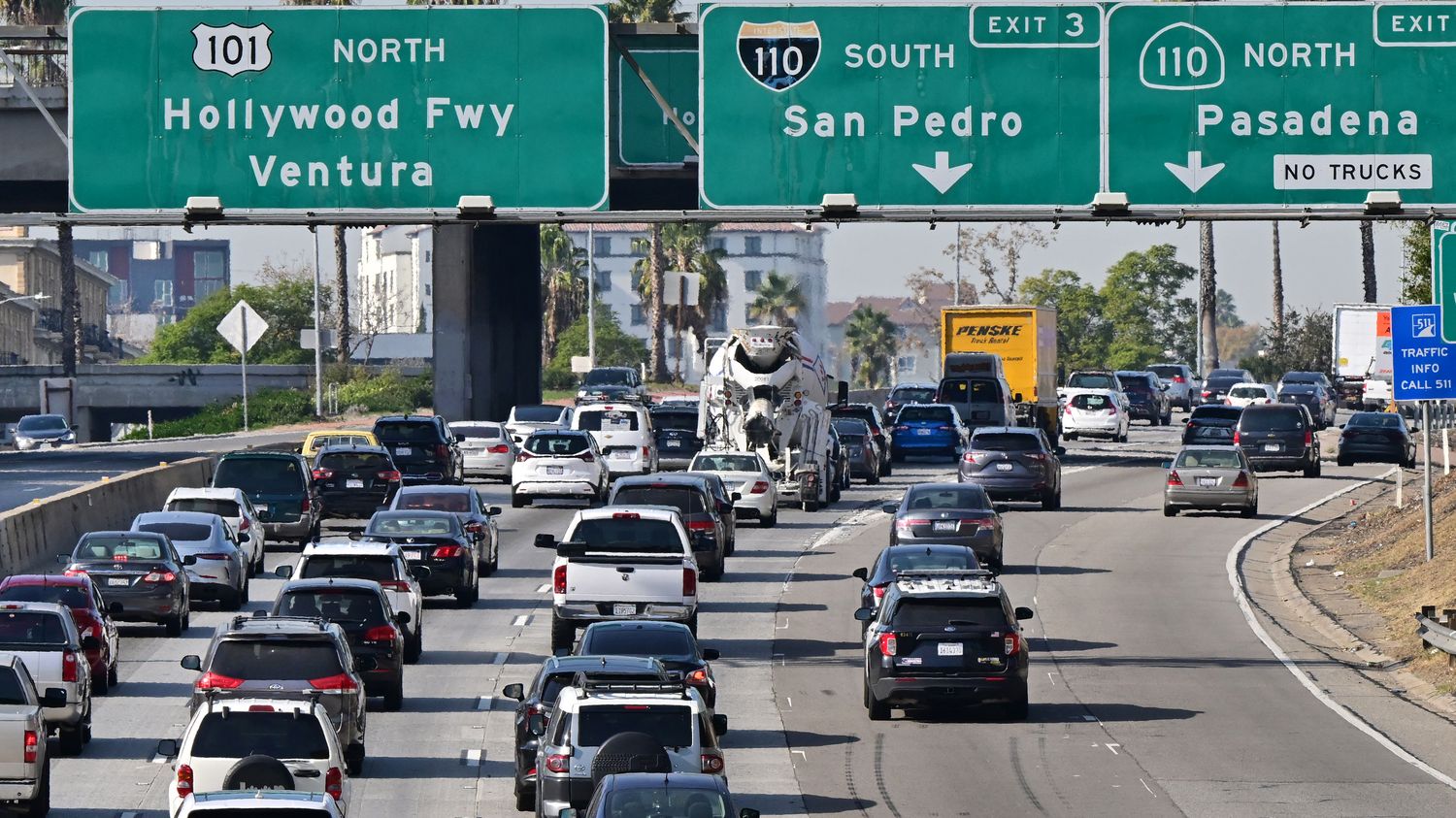The mayor of Los Angeles has announced that the 2028 Olympics will be “car-free.” But how will such a populous and car-dependent city manage without them?
Published
Reading time: 3 min

The 2028 Los Angeles Olympics will be “Car-free Games”said the city’s mayor, Karen Bass, on Saturday, August 10. An ambitious promise, four years from the deadline, but one that would help combat the Californian city’s notorious traffic jams. The stakes are therefore high, in a city of 3.8 million inhabitants, more than 18 million in the metropolitan area. Also added to this, during the Games, will be half a billion visitors expected.
But anyone who has ever been to Los Angeles knows that it is very difficult to get around without a car. Except that the mayor assures us, “These Games will involve using public transport to get to all the venues”. So the city has launched major projects, including the construction of a train line that will finally lead to the Los Angeles airport, which is underway. The scheduled date for completion of the work: early 2026. For the metro line connecting the city center to UCLA University, where the athletes will be housed, we will have to wait until 2027, if all goes well.
Projections “very very optimistic”according to James Moore, a transportation expert at USC in Los Angeles. “The Organizing Committee’s plan, presented in 2018, didn’t make much sense. It was too focused on the rails,” he explains. Except that the planned funding was not up to par, according to him. In the meantime, Karen Bass came to Paris for the Olympics. “She realized everything that had been accomplished there, and everything that we still had to doassures James Moore. It was after that she said we would have to take the bus.”
Indeed, the city has since announced that it will rely on the bus network, which will have to be strengthened as much as possible. To do this, more than 3,000 buses will be borrowed from other American states. A good idea, according to the transport specialist. “We have a lot of space on the road, but it is not managed well enough,” laments James Moore, while there is a huge amount of travel in Los Angeles.
Except that it is not enough to build and multiply the lines, it is also necessary to encourage residents and visitors to use this public transport. Not easy, according to James Moore, in a city where the car culture is very anchored.
“Quite honestly, I don’t think it will work, they will probably have to change their plans.”
James Moore, transport specialistto fanceinfo
“If you have the Olympics but there’s no parking and you don’t allow anyone to drive, it might work, but there’s going to be a lot of discontent and misunderstanding from locals,” according to the specialist, who recalls that the Olympic sites selected have large car parks“These parking lots should be made inaccessible. But what happens if people still come with their cars? All of this seems very difficult to implement.”observes James Moore.
But the academic, like the mayor of Los Angeles, is counting on the same phenomenon that took place during the previous Games, in 1984. That summer, many residents had left the city. In 2028, “They will probably arrange to stay away from the Games again” and organize their daily lives differently, by taking advantage of teleworking for example, explains the specialist.
All hopes are therefore allowed, especially since visitors themselves will not necessarily be reluctant to use public transport. “They will be aware, before coming, that they will have to travel without a car and will plan their trip accordingly.”
In any case, this strategy can only be beneficial for the Californian transport system. “neglected for too long”, says James Moore.
